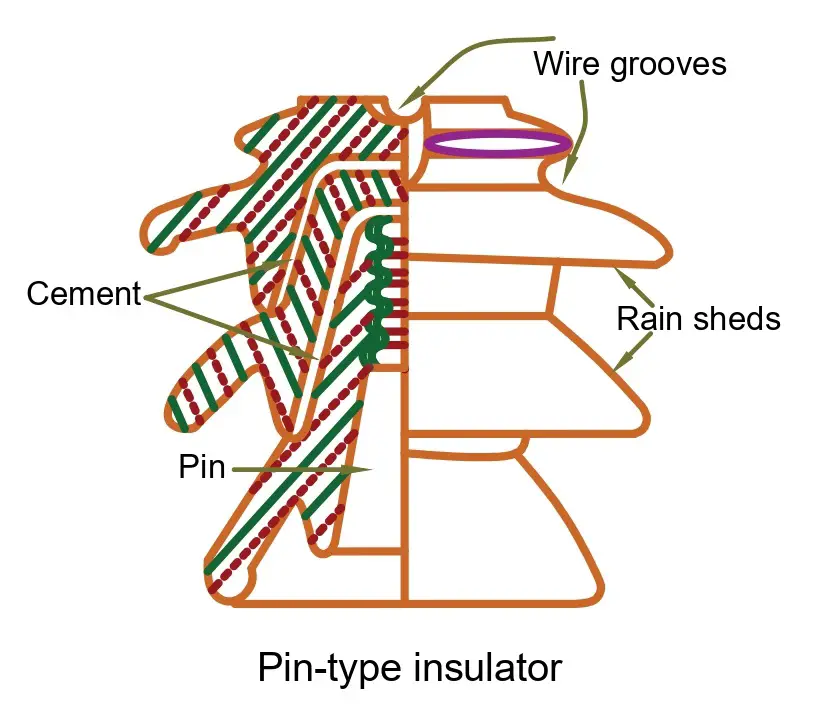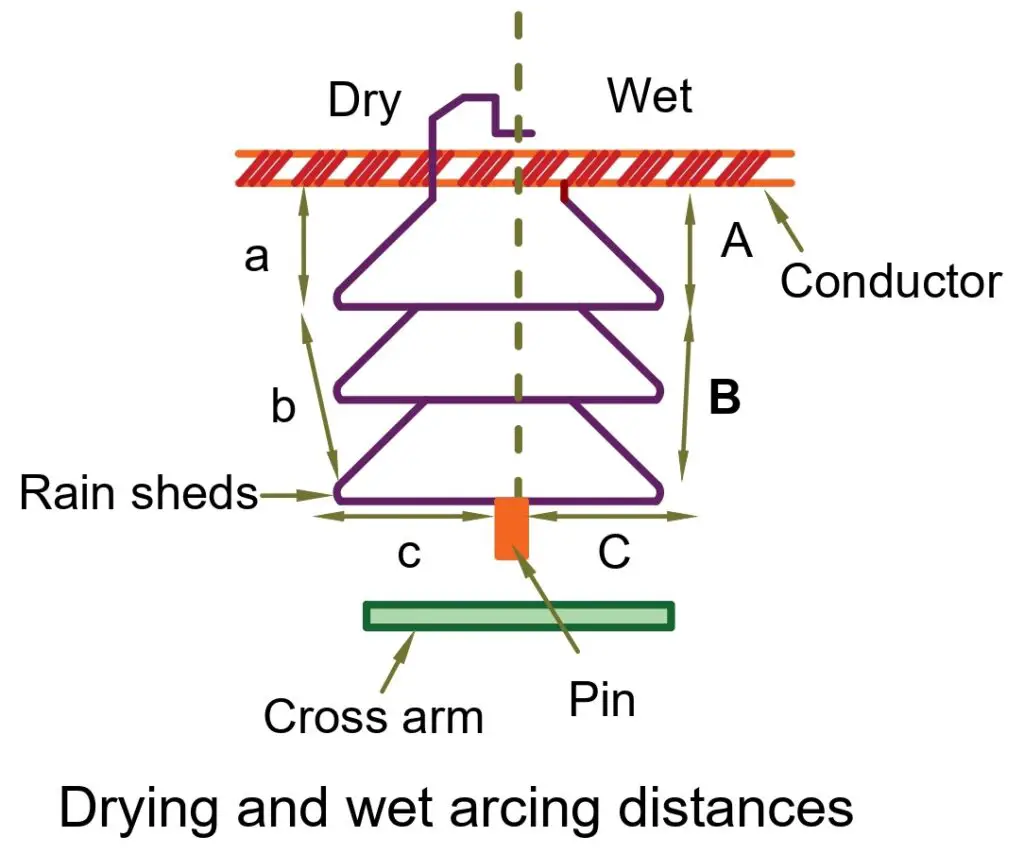The pin insulator is installed on a supporting tower’s cross arm and used to distribute power at voltages up to 33kV. The upper end of the insulator has grooves that help to keep the conductor securely in place. The conductor is secured to the insulator using an annealed binding wire made of the same material as the conductor. The wire is attached to the top groove for straight line positions and the side groove for angle positions. The body of the insulator contains a thimble made of lead that is cemented in place to hold the pin.
The pin insulator is made of non-conductive materials such as porcelain, ceramic, silicon rubber, or polymer. Polymer pin insulators are heavier than porcelain.

A single-piece pin insulator is used for low voltage, while two or more pieces are cemented together for high voltage insulators to maintain the proper thickness. The insulator creates a suitable route for the leakage current to flow through
The flashover voltage of moist and dirty surfaces is lower than that of clean and dry surfaces. The total arcing distance in dry air is represented by (a+b+c), while in wet conditions it is represented by (A+B+C).

Advantages of Pin Insulator
- The material has a high level of mechanical strength
- The pin-type insulator is designed with a sufficient creepage distance to prevent electrical leakage.
- It is used for the high-voltage distribution line.
- The pin-type insulator is simple to build and needs very little maintenance.
- It has the flexibility to be utilized in both vertical and horizontal orientations.
Disadvantages of Pin Insulator
- To achieve the intended result, it is necessary to use it with the spindle.
- These insulators are only appropriate for use in the distribution line.
- The highest voltage level that is currently available is restricted to 36kV.
- The pin used to secure the insulator can damage its thread.
Causes of Insulator Failure
Insulators can fail due to puncture or flashover, where current passes through the insulator’s body. The flashover is caused by an arc discharge between the conductor and the earth through the air surrounding the insulator.
During a flashover, the insulator remains undamaged, but it loses its functionality upon puncture. This means that even though the insulator may not appear damaged after a flashover, it can no longer provide the required insulation and may be prone to further flashovers.
The insulator is designed with sufficient thickness to prevent punctures during surge conditions. In order to prevent flashovers, the resistance to leakage currents is increased. Petticoats or rain sheds can be used to create multiple layers, which increases the distance of the leakage path. The rain sheds prevent flashovers by keeping the inner surface dry during wet weather, providing sufficient resistance for leakage resistance.
Suspension insulators are preferred for high-voltage work over 66kV due to their lower cost and weight compared to pin insulators.
Conclusion:
In conclusion, the pin insulator is a critical component in electrical distribution systems. It serves the essential purpose of providing insulation and support to overhead power lines.